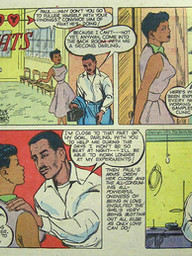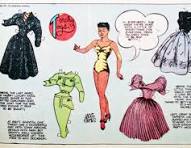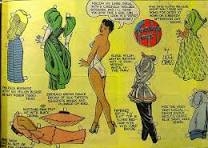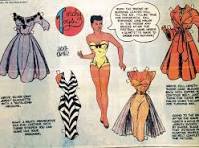BLACK ART HISTORY: First black female cartoonist Jackie Ormes
- Amelia Williams
- Mar 31, 2024
- 3 min read

Born Zelda Mavin Jackson in 1911, Jackie had a knack for art from a young age. Growing up in Pittsburgh, she found her passion for drawing and storytelling while doodling in her high school yearbook and writing for the Pittsburgh Courier. (2)
In 1937, Jackie made history with her debut comic strip, "Torchy Brown in Dixie to Harlem." This groundbreaking work marked her as the first Black female cartoonist to gain widespread recognition. Through her characters like Patty-Jo 'n' Ginger and Torchy, Jackie challenged stereotypes and addressed pressing social issues with wit and insight.
"Black women were always fat," she says. "Had bandannas on their heads, you know. Had large lips. Were always porters. We were servants. Think of Gone With The Wind, you know. We didn't speak clear English." - Barbara Brandon-Croft (3)
In many ways, the cartoonist Jackie Ormes’s depiction of black women and culture embodies Du Bois’s ideas. Her earliest creation, “Torchy Brown,” first appeared in the black-owned Pittsburgh Courier in 1937 and later in fourteen syndicated newspapers. Possessing no special powers or gadgets, as was typical of many adventure heroines of her day, Torchy drew on her own passion for life and expression of self-worth as the naïve but assertive teenager seized opportunities to make it from “Dixie to Harlem.” Torchy Brown’s battles were personal but historically based, reflecting the Great Migration of black folks from the 84 Shelley Armitage South to the North and paralleling Ormes’s personal observations of Chicago’s growth. (1)
Many of the cartoons also included pages where you could cut out the characters and turn them into paper dolls. An innovative touch, adding engagement with the art early on.
Due to her light skin tone, Jackie Ormes could have passed as white and the issue of passing, which she addressed humorously once in the first Torchy strip, possibly could have insured a job in the mainstream press early in her career. Late in her career when the Chicago Tribune did offer her a position, she refused -- for creative as well as political reasons, Ormes could never freely treat the issues she valued working for a white press and moreover for a white readership. (1)
The inclusion of a black girl character in l965 in “Brenda Starr” led to its temporary removal from circulation in the Southern states. And when the African-American Lieutenant Flip joined “Beetle Baiily” in l970, the strip was dropped by a number of Southern newspapers.(1)
In addition to her creative innovations, Jackie Ormes challenged prevalent stereotypes of black dolls, like mammies and raggedy children, by transforming her Patty-Jo cartoon character into the first upscale American black doll. Produced by the Terri Lee doll company from late 1947 to late 1949, Patty-Jo boasted playable hair and an extensive wardrobe, providing children with a diverse and relatable doll. Today, Patty-Jo dolls are highly sought-after collectibles, a testament to Ormes's groundbreaking contributions to representation in toys. (4)
Ormes truly was a bad bitch that challenged stereotypes and addressed social issues in her work, while navigating the complexities of race and representation within a predominantly white press and audience; her legacy, which includes pioneering dolls and inspiring future generations, continues to shape the world of cartoons and personally inspires me as an artist.
xx A
(1) reference
(2) reference
(3) reference
(4) reference






























